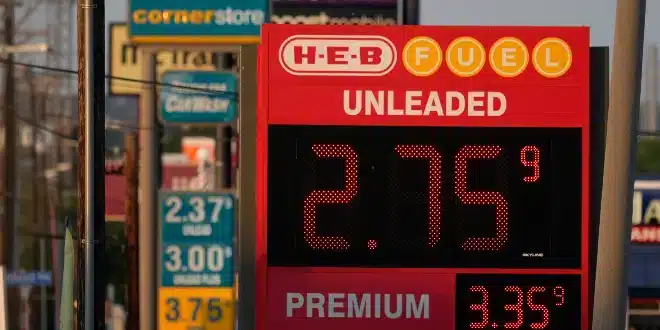Gas prices are declining across the U.S., offering some relief to drivers who are now paying a bit less to fill their tanks.
As of Monday, the national average for gas prices was around $3.44 per gallon, according to AAA. This marks a drop of about 9 cents from the previous week, the largest one-week decrease recorded by the motor club in 2024. Additionally, this is more than 19 cents less than a month ago and over 14 cents lower compared to the same time last year.
### Why Are Gas Prices Falling?
Several factors are contributing to the current drop in gas prices. One significant reason is reduced demand.
“Demand is quite shallow,” said Andrew Gross, a spokesperson for AAA. He pointed out that post-Memorial Day, demand typically rises, but this trend hasn’t been evident since the COVID-19 pandemic.
Data from the Energy Information Administration showed U.S. gasoline demand dropped to about 8.94 million barrels a day last week. While this is still substantial, it’s lower than the approximately 10 million barrels per day seen before the pandemic.
Experts also note that high gas prices following Russia’s invasion of Ukraine in 2022 and ongoing inflation have caused many Americans to alter their driving habits. Increased fuel efficiency in cars and the rise in electric vehicle usage are also contributing factors.
Seasonal factors play a role too. According to Patrick De Haan, head of petroleum analysis at GasBuddy, gas prices generally ease in early summer due to increased refinery capacity as maintenance periods end.
“Once refinery maintenance is completed, the output or utilization of refineries increases, boosting supply,” De Haan explained. This increased supply, coupled with lower demand, has led to a more noticeable decline in prices this year. He added that U.S. refinery utilization is at its highest levels since the pandemic.
Separately, the Biden administration announced last month the release of 1 million barrels (about 42 million gallons) of gasoline from a Northeast reserve to help lower prices. However, De Haan noted this action has minimal national impact, as 42 million gallons equal less than three hours of U.S. daily consumption.
“Current declining gasoline prices are primarily driven by seasonal and predictable economic factors,” De Haan said.
### What About Oil Prices?
Cooling oil prices are another factor in the decline at the pump. Gasoline prices are closely tied to the cost of crude oil, which is the main component in gasoline.
West Texas Intermediate crude, the U.S. benchmark, has remained in the mid-$70s per barrel in recent weeks, closing at under $78 a barrel on Monday. “This isn’t a bad place for it to be,” Gross noted, adding that crude prices need to exceed $80 to significantly impact pump prices.
Oil prices can be volatile due to various global factors, including production cuts from OPEC and its allies. Recently, OPEC+ announced plans to extend cuts totaling 5.8 million barrels per day but also set a timetable to restore some production, leading to a bearish reaction in oil prices.
### Will Prices Go Back Up?
Predicting future prices is challenging. However, without major disruptions, analysts like Gross and De Haan believe prices could continue to decline.
Experts monitor hurricane risks closely, as they can disrupt refineries and cause prices to spike. “Prices move on fear,” Gross said, explaining that hurricanes in the Gulf of Mexico can prompt refineries to reduce operations, impacting prices regionally.
Barring unexpected events, De Haan expects the national average to stay between $3.35 and $3.70 per gallon. Prices typically drop further in the fall, and we might see the national average fall below $3 by late October or early November.
### Which States Have the Lowest Gas Prices?
While gas prices are dropping nationwide, some states consistently have lower averages due to factors like proximity to refineries and local fuel regulations.
As of Monday, Mississippi had the lowest average gas price at around $2.94 per gallon, followed by Oklahoma at $2.95 and Arkansas at just under $2.97.
Conversely, California, Hawaii, and Washington had the highest average prices, at approximately $4.93, $4.75, and $4.41 per gallon, respectively.


